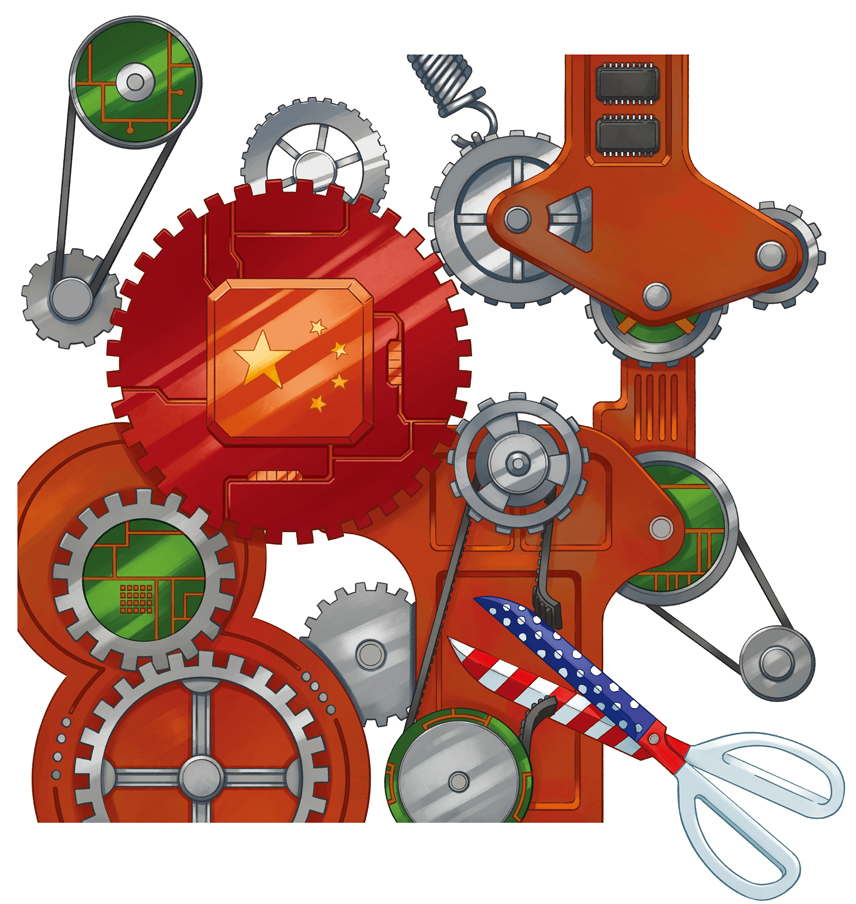Sun Baohong, Professor of Marketing at CKGSB, looks at the vital importance of machine learning to brand positioning and understanding consumers
Baohong Sun is the Dean’s Distinguished Chair Professor of Marketing and the Associate Dean for Americas at CKGSB. Her research focuses on rational and strategic consumer choices and dynamic structural models; the dynamic and interactive marketing mix and customer information management; and, most recently, on modelling dynamic and interdependent consumer decisions on e-commerce and social media platforms. Her extensive consulting experience includes work with major corporations including Bosch, Boy Scouts of America, Highmark Insurance, John Deere and IBM.
An integral part of the rise of technology over the past two decades has been the increased capability and complexity of machine learning tools. Now ubiquitous in sectors across the digital sphere, machine learning allows companies to harness and use data like never before. Sun Baohong, Professor of Marketing at CKGSB, has approached the machine learning phenomenon as both a researcher and a consultant, helping several major corporations make full use of the range of opportunities it offers.
In this interview, Sun looks at what effective use of machine learning can mean for brands in China and the US in terms of data collection and usage, R&D and brand positioning.
Q. Could you tell us about your recent research and its uses in marketing?
A. My research has been focused on machine learning, particularly on a decision support system. I was trained as an economist and we derive theory-based economic models, so machine learning is a totally new kind of thing for us—machines only look at data and try to understand it without looking at consumers themselves and their decision-making processes. The research tries to take new tools, such as graph theory and deep learning, and apply them to marketing. We take the data generated by consumers and use it to try to understand how consumers are making decisions and how those decisions are related to brands and products.
There are several ways in which the research and applications engage with one another, but one is a consumer’s “foot vote”—we now know where consumers are 24/7 and how long they spend at every location.
We call it a foot vote because it’s not about what consumers say, but about what consumers actually make an effort to do, where they go and how long they stay there. In this sense, they vote and we can tally that vote. We can now understand consumers’ preferences based on what they do with their time because we can see whether you’re in a car, on a bus, how much time you spend at the gym and how much time you spend at the office. Through this, we can derive a deeper understanding of consumers’ lifestyles and also use the data to study brand retailers and their relationships.
Q. What did those “foot votes” reveal?
A. First, we studied co-visited stores. We grouped together destinations that a person with certain interests will habitually frequent. For example, after studying someone’s movements, we can see that a specific person might enjoy going to bars, only eats healthy food, they never go to McDonald’s, and they like doing yoga. With that information, we can see which brands are put together, by them, to satisfy that type of lifestyle.
We find co-visited stores when the data from people with varying lifestyle patterns—and different destination clusters—overlaps. An example of a second person’s lifestyle might reveal someone who is quite sedentary in their leisure time, they often frequent the cinema or stay at home, they visit McDonald’s regularly and rarely leave the city. However, they also spend a lot of time in bars. Now, presented with these two patterns, you wouldn’t be likely to see these as similar people, however they do have a co-visited store, in the form of the bars that they go to.
So basically co-visited businesses are based on where visits took place and we’re going to study the complementary relationships among brands. What type of brands are perceived by the consumer as having similar types of brand purpose that serve their lifestyle? Consequently, this kind of data helps businesses with brand positioning.
In addition to this, we have studied the location of stores and the locations of their competitors. We then use graph theory that allows us to derive all the stores in the galaxy into one multidimensional map. The closer two stores are positioned on our map, the more they are competing for the same group of consumers.
Q. With your experiences in the US and China, do you think there are differences in the way we understand consumers? What are some of the trends that you’re seeing in terms of consumer behavior?
A. In China, people want to consume and they want to get together and socialize. It is the same in the US, but consumers are a little bit more rational and a little less price sensitive. However, I think the most important thing is that the digital landscape is very different. Consumers are equipped with different types of digital tools which cause differences in consumers’ social behavior.
We found that people in the US tend to group themselves and live in areas with people that share a similar lifestyle. But in China it is less so—people are more mixed together. We did a study in Washington DC and found that a majority of diplomats live northwest of the White House. People there generally live a more high-end lifestyle. And then you go to Baltimore, and it’s full of families. There is a very clear distinction, which is not the case in China.
The second is because of the network structure we derived. We actually found that there are three brands globally positioned in the center of our brand network, which basically means that they attract all kinds of consumer clusters, whatever their lifestyle. The first is Starbucks. The second, I was surprised to learn, is Dunkin’ Donuts and the third is Chipotle.
Basically, the way you position your brand determines how close of a match you can get to your target audience’s lifestyle, and increase the likelihood of them building their lives around it as a central locus. It’s not a product feature, but how you position yourself among consumers’ lifestyles.
Q. How do you think your research and the new technology that we have at our fingertips, and the data that’s embedded in it, will change the way marketing is done in the future?
A. Machine learning provides us with several ways to change the way we do marketing. The first is that we can collect more types of data. You can process what people say and when they are saying it, along with all of their social media activity. We get far more customer insights from it.
The second is that because machine learning is part of AI, it’s more likely to provide opportunities for real-time decision making. It will become more like reinforcement learning for us, as the machine is going to act as a decision maker.
Machine learning makes it possible to analyze multi-dimensional data on a large-scale very quickly. The future of marketing will be automated and many human decisions will be made by machines, or at least aided by machines.
In the future, competition will not be at the product level, but at the customer level. And whichever business can provide better customization, a better customer experience and better customer engagement will be able to sell more products. Information services will have to become increasingly personalized, and that can only be done through the use of AI and machine learning.
Q. How are different retail technologies used in China and the US similar or dissimilar?
A. Retail technology can be visible or invisible. Visible technologies are those tools, such as cameras, smart mirrors and audio robotics that customers interact with to help guide their journey towards a purchase. The invisible technologies are the tools and software, based on deep learning and AI, that work behind the scenes to create the user experience. The difference between China and the US is that in China, these invisible technologies are created by big private companies like Alibaba and they are very consumer-facing and product-driven.
The whole philosophy behind consumer-facing, product-driven technology is to sell more products to consumers, through things such as product recommendation systems, applying AI to livestreams and customized advertising. Most new innovations in China aim to improve the experience for the consumer, like mobile payment systems and facial-recognition payment systems.
In the US, a lot of investment and a great deal of effort is put into the business side of the equation. So while it is still serving the consumer, the focus is more on how machine learning and AI can help businesses. Platforms are still the innovators, and they try to help both the brands and the consumer equally, but more emphasis is placed on providing enterprise solutions, which means that it’s a B2B setting—a big industry helping traditional manufacturing retailers with digital transformation. There’s a huge industry for that in the US, bigger than in China.
In China, all manufacturers and retailers rely on these platforms. But in the US, manufacturers and retailers have their own innovation labs. Each of them becomes an innovation center. They are doing their own digital transformation and as a result, it gives them multiple layers of innovation.
Q. Why is there that kind of difference between the two markets?
A. There are several different reasons for it. The first is that Alibaba and Taobao are doing their job extremely well, and that has been the case from the very beginning. They have created an empire and focused on growing horizontally to cover all the services that a consumer needs. They’ve made it so convenient and high-performing that brands continue to use it. But, after a while, a brand’s growth actually depends on it and they cannot survive without it. All retailers push their customers to join that single platform, making it even harder to ever break free and build its own platform. In that process, however, retailers and manufacturers lose out on all of the data they could have harvested from their consumers.
The second reason is that manufacturers and retailers in China don’t understand the situation fully and they’re just product-driven. They see the platforms that they use as merely channels to sell their products and as collaborators, but that is a very dangerous thought to have, because platforms do not compete with businesses on a channel level. They want your data. Many retailers and businesses are so behind on understanding what’s going on, what kind of competition they are facing, and what a big mistake it is.
There’s also a third reason. Regulation in the US is more restrictive—they don’t want people to share data across brands. In China this is not the case, people are collaborating and sharing data, giving more reasons, especially the added convenience it provides, for the platforms to grow horizontally.
Chinese brands have to realize that the future is going to be all about data. The platform should pay you to get at your customers’ data. Instead, they are doing the opposite.
Q. You talk about Chinese brands not understanding the value of data. How does this differ from the US? Does data regulation play a role?
If you have too many restrictions, data is less shareable and then companies are less incentivized to do research, just like what is happening in the US. They don’t share data like in China—Facebook data stays with Facebook, Amazon data stays with Amazon. You can see that they are growing vertically, but not horizontally. The type of innovation open to them is more limited than that of Chinese companies, like WeChat.
Because of horizontal growth, companies like Alibaba and WeChat can follow a consumer’s decision-making journey from the beginning to the end. But in the US you don’t see that. People start on Facebook to find which products people are talking about. Then, they go to Yelp to find which one they should seriously consider. Once they have made that decision, they then go to Amazon to look at the products on offer and to make a purchase. None of this data is shared between these companies. A consumer has to go through several apps in order to finish their decision journey. However, in China, this can all be done on one platform.
Interview by Jessica Wang, CKGSB


















